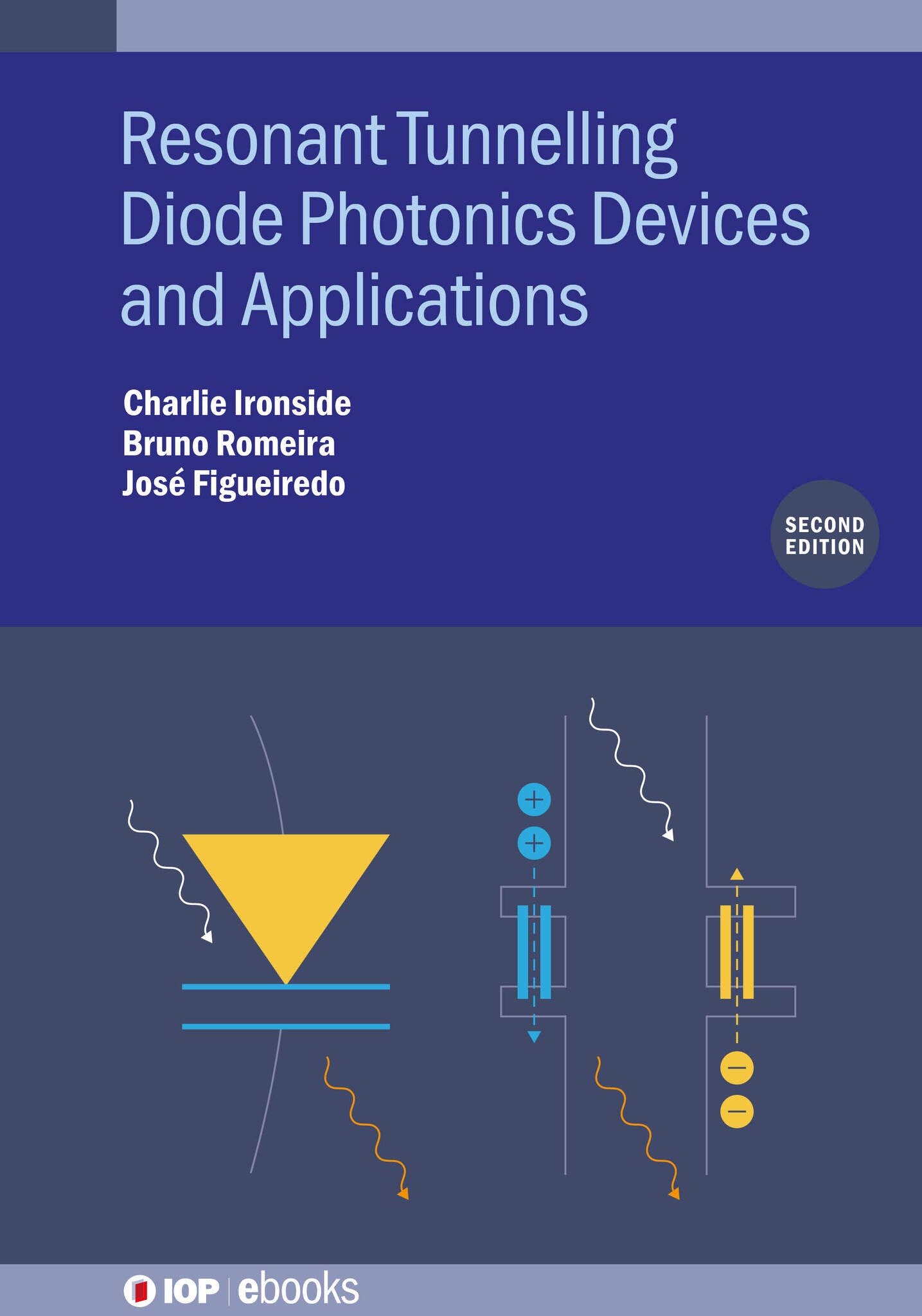We're sorry. An error has occurred
Please cancel or retry.
Resonant Tunneling Diode Photonics Devices and Applications (Second Edition)

Some error occured while loading the Quick View. Please close the Quick View and try reloading the page.
Couldn't load pickup availability
- Format:
-
01 December 2023

The resonant tunneling diode (RTD) is a semiconductor device that can act as the highest speed electronic amplifier and oscillator (bandwidth >1 THz). It is made using ultrathin (<10 nm) layers of semiconductor alloy that can be easily integrated with photonic devices such photodetectors and lasers. Incorporating the ultrahigh speed RTD amplifier gives the photonic devices new capabilities that are described in the book - as are exciting new applications made possible by integrating the RTD with photonic devices such as neuromorphic (brain-like) photonic computing. Some of these systems provide real-world applications of concepts from nonlinear dynamical theory - concepts including excitability, chaos and synchronisation.
Key Features:
- Comprehensive introduction to the research literature on resonant tunnelling diode photonics
- State of the art introduction into how this technology is deployed to make devices for various systems
- Software –Python notebooks which give the reader not only insight into how existing devices operate but also tools that can be used to design new devices
- Unique and cogent combination of fundamental physical principles and applications of resonant tunnelling diode photonics

SCIENCE / Physics / Optics & Light, Optical physics, TECHNOLOGY & ENGINEERING / Electronics / Optoelectronics, TECHNOLOGY & ENGINEERING / Electronics / Semiconductors, Materials / States of matter, Electronic devices and materials

Preface
Acknowledgements
Author biographies
1 Introduction
1.1 Introduction
1.2 Quantum tunnelling devices
1.3 Negative differential conductance
1.4 Nonlinear dynamics
1.5 Optoelectronic integrated circuits
1.6 Outline
References
2 Quantum tunnelling
2.1 Introduction
2.2 Negative differential resistance
2.3 Calculating the transmission probability, T(E)
2.3.1 T(E), via the transfer matrix method
2.4 Applying the transfer matrix method to an AlGaAs/GaAs/AlGaAs RTD
2.4.1 The − AlxGa1 xAs layers
2.5 Resonance tunnelling diode response time
2.6 Conclusions
References
3 Resonant tunnelling diode: electrical and optical properties
3.1 Introduction
3.2 Differential negative conductance
3.2.1 High-frequency response
3.3 Optical properties: optical waveguiding, electroabsorption, photoconduction and lasers
3.3.1 Optical waveguiding
3.3.2 Electroabsorption
3.3.3 Photoconductivity and photodetection
3.3.4 Optical emission
3.4 Conclusions
References
4 Resonant tunnelling diode electroabsorption modulators
4.1 Introduction
4.2 Electro-optic and electroabsorption modulators
4.2.1 Electro-refraction modulators
4.2.2 Electroabsorption modulators
4.3 Resonant tunnelling diode EAM device
4.4 RTD-EAM design and operation principle
4.5 GaAs RTD-EAM operation at 900 nm
4.5.1 Device implementation and low frequency characterisation
4.5.2 Optical modulation under applied external signals
4.5.3 Optical modulation enabled by self-sustained oscillations
4.6 InGaAlAs/InP RTD-EAM operation at 1550 nm
4.6.1 Device structure and low frequency characterisation
4.6.2 RTD-EAM high-frequency characterisation
4.7 Conclusions
References
5 Resonant tunnelling diode photodetector (RTD-PD)
5.1 Introduction
5.2 RTD-PD operation
5.3 Review of photoconductive detectors
5.3.1 Operating principle of photoconductive detectors
5.3.2 Design guidelines of high-performance photodetectors
5.4 RTD-PD implementation and characterisation
5.4.1 RTD-PD responsivity
5.4.2 RTD-PD response time
5.5 RTD-PD excitability and optically induced spike generation
5.6 Optical control of high-frequency RTD oscillators
5.7 Design guidelines for high-bandwidth RTD-PDs
5.8 Conclusions
References
6 Resonant tunnelling diode—laser diode (RTD—LD and LEDs)
6.1 Introduction
6.2 Hybrid RTD laser circuit
6.2.1 Model of the RTD-LD hybrid circuit
6.3 Integrated RTD laser circuit
6.4 Integrated RTD light emitting diode (RTD-LED)
6.4.1 Design and fabrication of unipolar microRTD-LEDs
6.4.2 Room-temperature electroluminescence
6.4.3 Toward negative differential resistance
6.5 Conclusions
References
7 Nonlinear dynamics of RTD oscillators
7.1 Introduction
7.2 Photonic synchronisation and chaos
7.2.1 Injection locking
7.2.2 Period-adding bifurcation
7.2.3 Quasi-periodic route to chaos
7.3 Excitable spiking in neuromorphic photonic devices and systems
7.3.1 Excitability (neuron-like) dynamics
7.3.2 Spiking and bursting dynamics
7.3.3 Bistable dynamics
7.4 Conclusions
References
8 Resonant tunnelling diode-optoelectronic oscillator (RTD-OEO)
8.1 Introduction
8.2 Optoelectronic oscillator
8.3 Photonic integrated RTD-OEO
8.3.1 Single-optical fibre loop
8.3.2 Dual-optical fibre loop
8.3.3 Time-delayed-feedback Liénard oscillator model
8.4 Regenerative RTD-OEO
8.5 Conclusions
References
9 RTD photonics for neuromorphic computing
9.1 Introduction
9.2 Neural dynamics in artificial RTD neurons
9.2.1 Bistability
9.2.2 Monostability and self-sustained oscillations
9.2.3 Excitable dynamics
9.3 Excitable neuron-like dynamics
9.3.1 Spiking and bursting
9.3.2 High-speed optically-induced spike generation
9.3.3 Mixed-mode oscillations
9.3.4 Regenerative photonic neuron-like memories
9.4 Spiking neural networks
9.5 Conclusions
References
10 Conclusion
10.1 Conclusions
References
11 The Jupyter Python notebooks
11.1 Colab Python notebooks
11.1.1 Introduction
11.1.2 Chapter 2
11.1.3 Chapter 3
11.1.4 Web links



